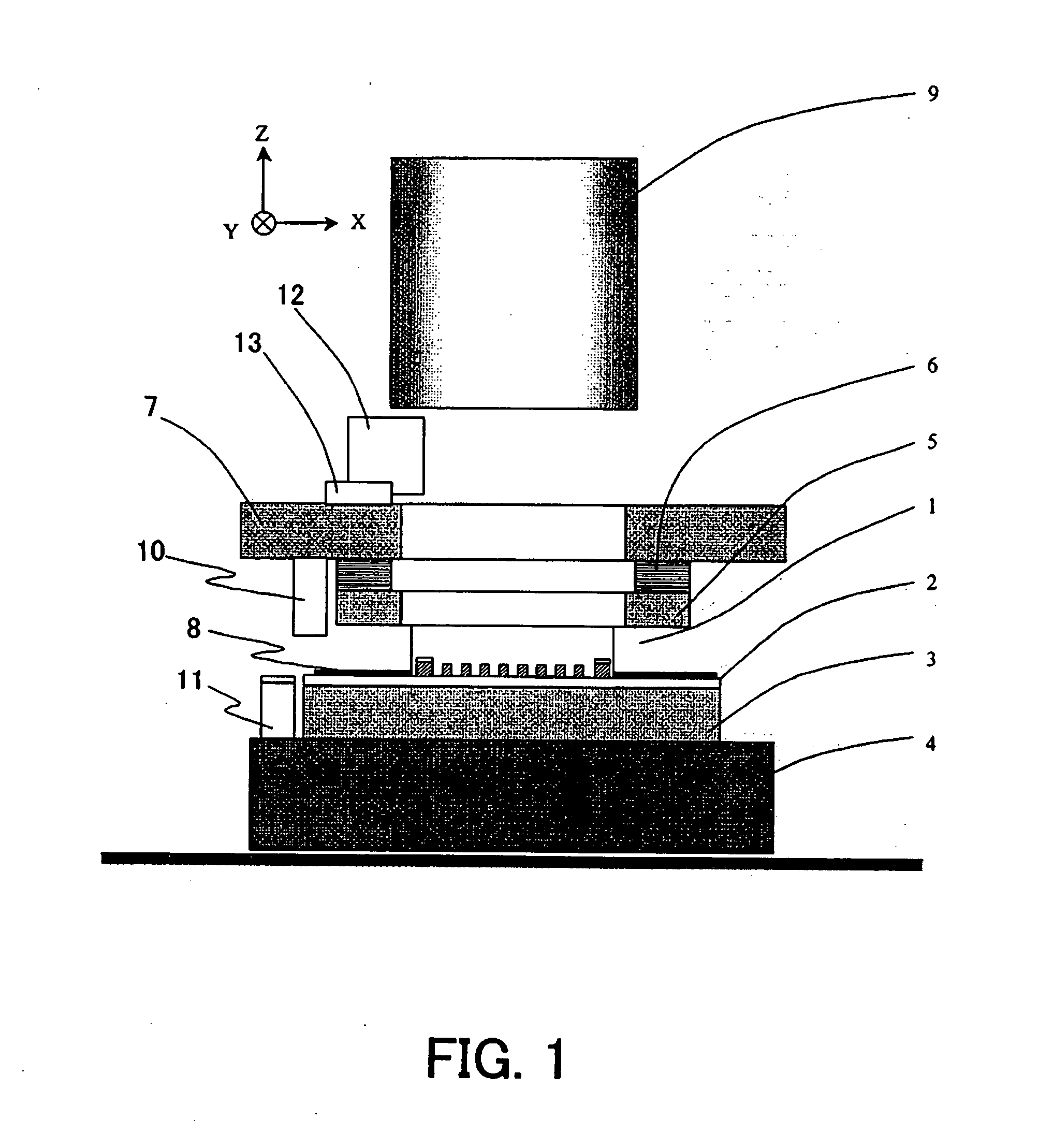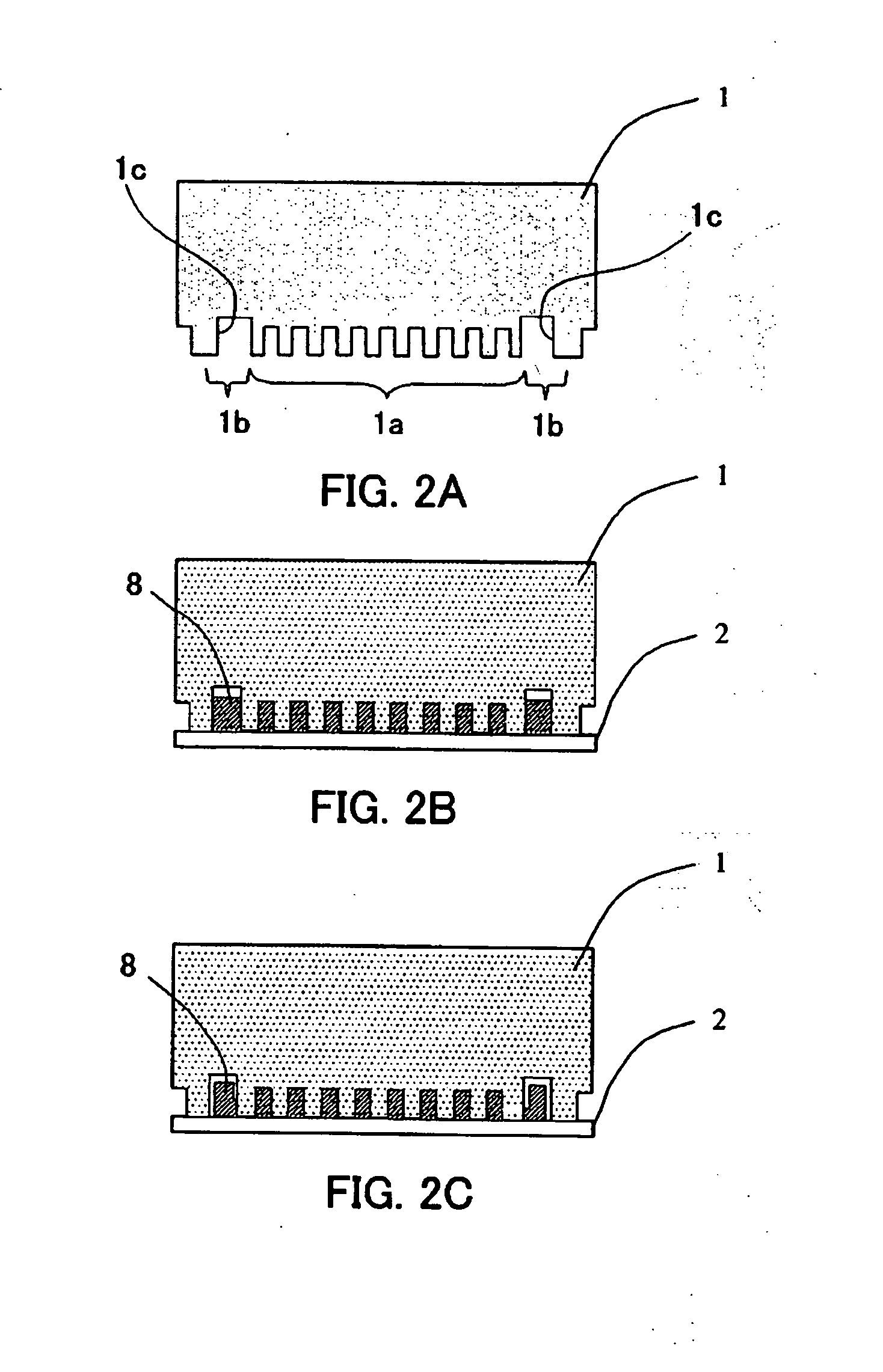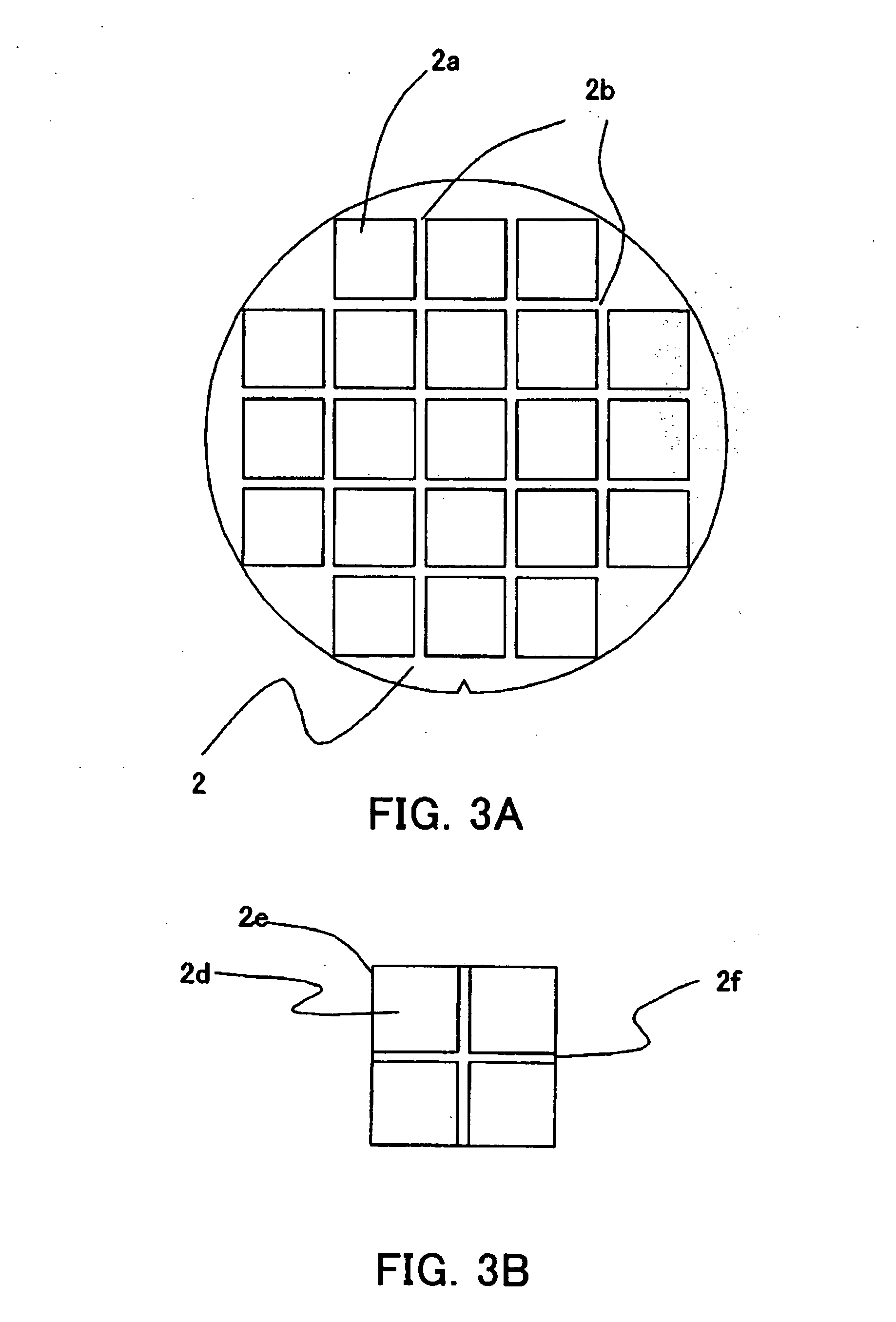Pattern transferring mold, pattern transferring apparatus and device manufacturing method using the same
- Summary
- Abstract
- Description
- Claims
- Application Information
AI Technical Summary
Benefits of technology
Problems solved by technology
Method used
Image
Examples
embodiment 1
[0027]FIG. 1 shows a photo-curing type (or UV-curing type) nanoimprint apparatus (or pattern transferring apparatus) in schematic form, which uses a pattern transferring mold that is Embodiment 1.
[0028] In FIG. 1, 1 denotes a pattern transferring mold (original plate or a template) having a relief pattern for semiconductor devices such as a large-scale integrated circuit and MEMS. 2 denotes a wafer that is a substrate, and 3 denotes a wafer chuck for holding the wafer 2. 4 denotes a wafer stage for positioning the wafer 2. The wafer stage 4 can perform X, Y and Z axes directional driving and rotational driving (ωx, ωy, and θ) around each axis.
[0029]5 denotes a mold chuck for holding the mold 1, and 6 denotes a mold stage for positioning the mold 1. The mold stage 1 needs to rotate around at least Z-axis. It is preferable for the mold stage to perform Z-axis driving and ωx and ωy rotations. The mold stage 6 has a mechanism to adjust the degree of parallelization between the mold 1 ...
embodiment 2
[0066]FIG. 4A shows a pattern transferring mold that is; Embodiment 2 of the present invention in schematic form. The shape of a pattern formed in a patterned area on the mold of this embodiment is the same as that of Embodiment 1. The mold of this embodiment is used in the nanoimprint apparatus described in Embodiment 1.
[0067]101 denotes the mold of this embodiment. 101a denotes a patterned area (first area) where a relief pattern is formed, the patterned area being formed on the bottom face of the mold 101. 101c denotes a non-patterned area (second area) which faces the scribe line on the resist 8.
[0068] In FIG. 4A, 101d denotes a protruded portion which is formed in at least a part of the non-patterned area 101c. The protruded portion 101d is a portion having a mold-releasing shape. The protruded portion 101d has a shape such as a conical shape or a triangular prism shape (wedge shape), in which its sectional area becomes smaller towards its lower end. The height of the protrud...
embodiment 3
[0073]FIG. 5A shows a pattern transferring mold that is Embodiment 3 of the present invention in schematic form. The shape of a pattern formed in a patterned area on the mold of this embodiment is the same as that of Embodiment 1. The mold of this embodiment is also used in the nanoimprint apparatus described in Embodiment 1.
[0074]201 denotes the mold of this embodiment. 201a denotes a patterned area (first area) where a relief pattern is formed, the patterned area being formed on the bottom face of the mold 201. 201c denotes a non-patterned area (second area) which faces the scribe line on the resist 8.
[0075] In FIG. 5A, 201e denotes a through-hole which penetrates the inside of the mold 201 and opens on the non-patterned area and the side face of the mold 201. The shape of the opening 201f of the through-hole 201e on the non-patterned area is a mold-releasing shape. The other opening of the through-hole 201e may be formed on any face of the mold 201 other than the bottom face.
[...
PUM
| Property | Measurement | Unit |
|---|---|---|
| Size | aaaaa | aaaaa |
| Shape | aaaaa | aaaaa |
| Area | aaaaa | aaaaa |
Abstract
Description
Claims
Application Information
 Login to View More
Login to View More - R&D
- Intellectual Property
- Life Sciences
- Materials
- Tech Scout
- Unparalleled Data Quality
- Higher Quality Content
- 60% Fewer Hallucinations
Browse by: Latest US Patents, China's latest patents, Technical Efficacy Thesaurus, Application Domain, Technology Topic, Popular Technical Reports.
© 2025 PatSnap. All rights reserved.Legal|Privacy policy|Modern Slavery Act Transparency Statement|Sitemap|About US| Contact US: help@patsnap.com



